Conny Waters – AncientPages.com – At the end of 2022, MOLA archaeologists in Norfolk, UK, announced the amazing discovery shedding new light on the life of Anglo-Saxons. Scientists said they had unearthed a “once-in-a-lifetime” Medieval gold necklace that was “internationally important.” According to experts, the exceptional necklace is the “richest of its type ever uncovered in Britain.”
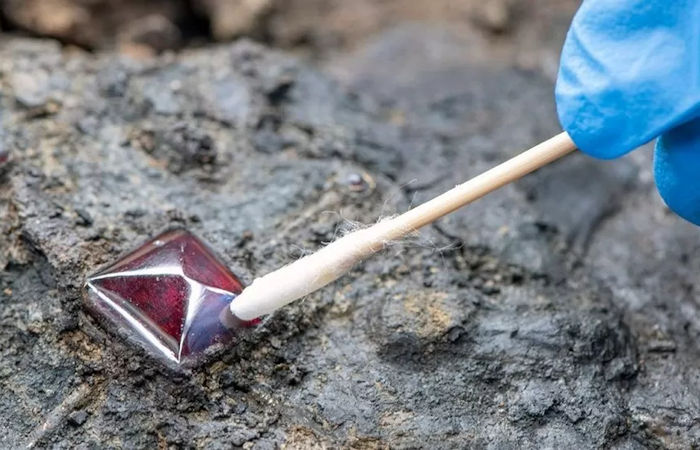
Examinations of the Harpole Treasure were successful. The garnet is the first part of a medieval silver cross to be revealed by archaeologists. Credit: MOLA
The magnificent 1,300-year-old necklace is made up of at least 30 pendants and beads made of Roman coins, gold, garnets, glᴀss, and semi-precious stones and was found inside a grave of a woman who may have been royalty.
MOLA, the Museum of London Archaeology, named the findings the “Harpole Treasure.”
“The burial also contained two decorated pots and a shallow copper dish. However, x-rays taken on blocks of soil lifted from the grave revealed a further tantalizing find – a striking and elaborately decorated cross, featuring highly unusual depictions of human faces cast in silver. The soil blocks are currently being micro-excavated by MOLA conservators, but this large and ornate piece suggests the woman may have been an early Christian leader,” a MOLA spokesman said.
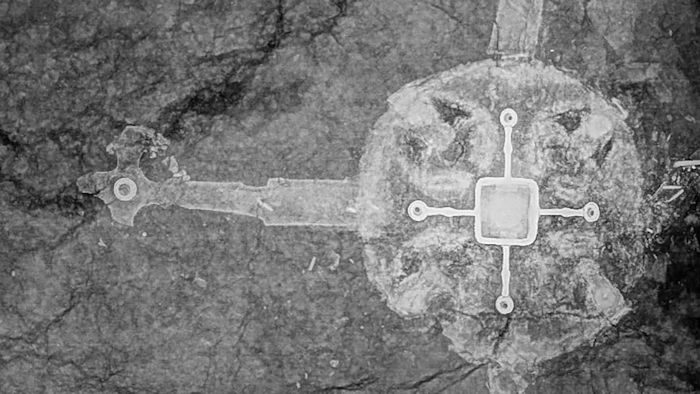
Part of the X-ray of the cross shows the central garnet. Credit: MOLA
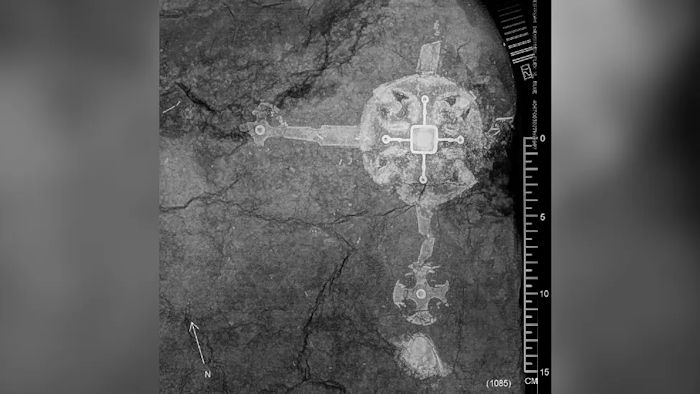
The size of the unearthed cross can be seen in this full X-ray image. Credit: MOLA
“This is an exciting find which will shed considerable light on the significance of Northamptonshirein the Saxon period. It also serves as a reminder of the importance of archaeology in the planning and development process,” Liz Mordue, archaeological advisor for North Northamptonshire Council, said.
Scientists say a unique Medieval silver cross has been recovered but is still encased in earth.
X-rays revealed the shape of a cross, but it could be some time before the entire item can be seen due to the slow, delicate process of removing all the earth from it.
“Micro-excavations have revealed this central garnet, which sits at the centre of the huge silver cross found within the Harpole burial.
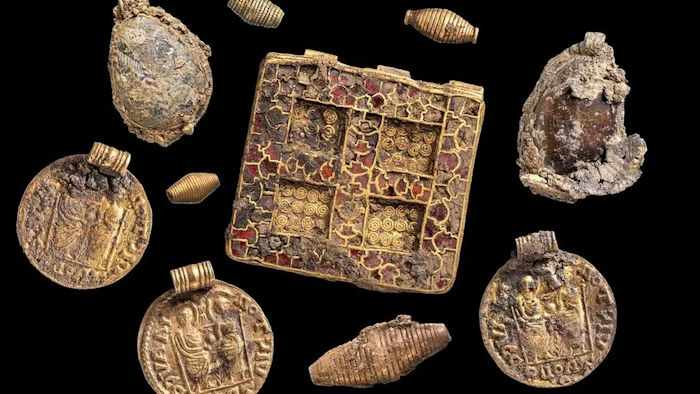
The necklace comprises 30 pendants and beads made from Roman coins, gold, and semi-precious stones. Credit: MOLA
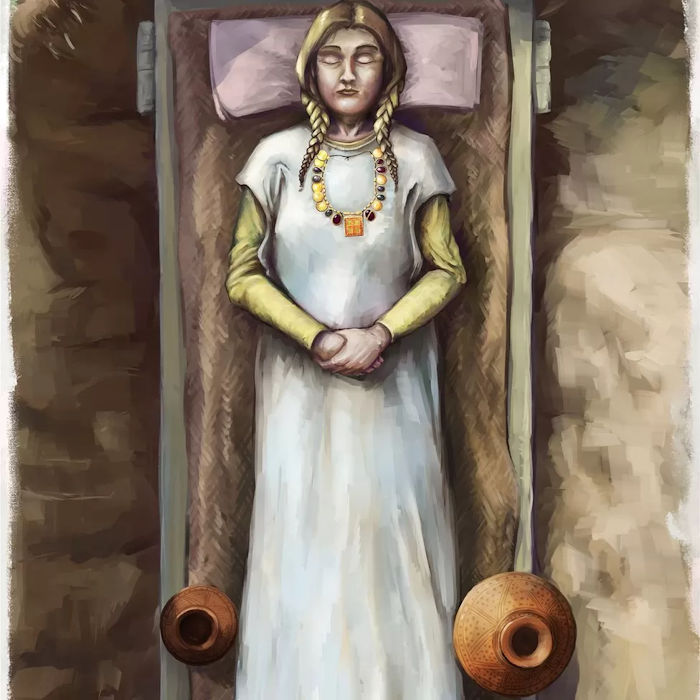
An artist’s impression shows what the grave of the high-status woman may have looked like. Credit: MOLA
This size cross in this kind of burial is unique and makes us think the grave may have belonged to an early Christian leader.
We can’t wait to see what else there is to find!” the MOLA team commented on Facebook.
“A Mola spokeswoman said: “We haven’t excavated it from its block yet, so there are lots of questions we can’t answer. All we really know is the shape and that it is big and contains silver.”
See also: More Archaeology News
Based on the X-rays taken several months ago, archaeologists knew it had a garnet at its centre.
“The central garnet is the first part of the cross we’ve reached,” she said. A skeleton found within the burial had fully decomposed leaving only tiny fragments of tooth enamel,” the BBC reports.
Examinations of the extraordinary Harpole Treasure continue, and we can expect it to reveal even more secrets with time.
Written by Conny Waters – AncientPages.com Staff Writer





